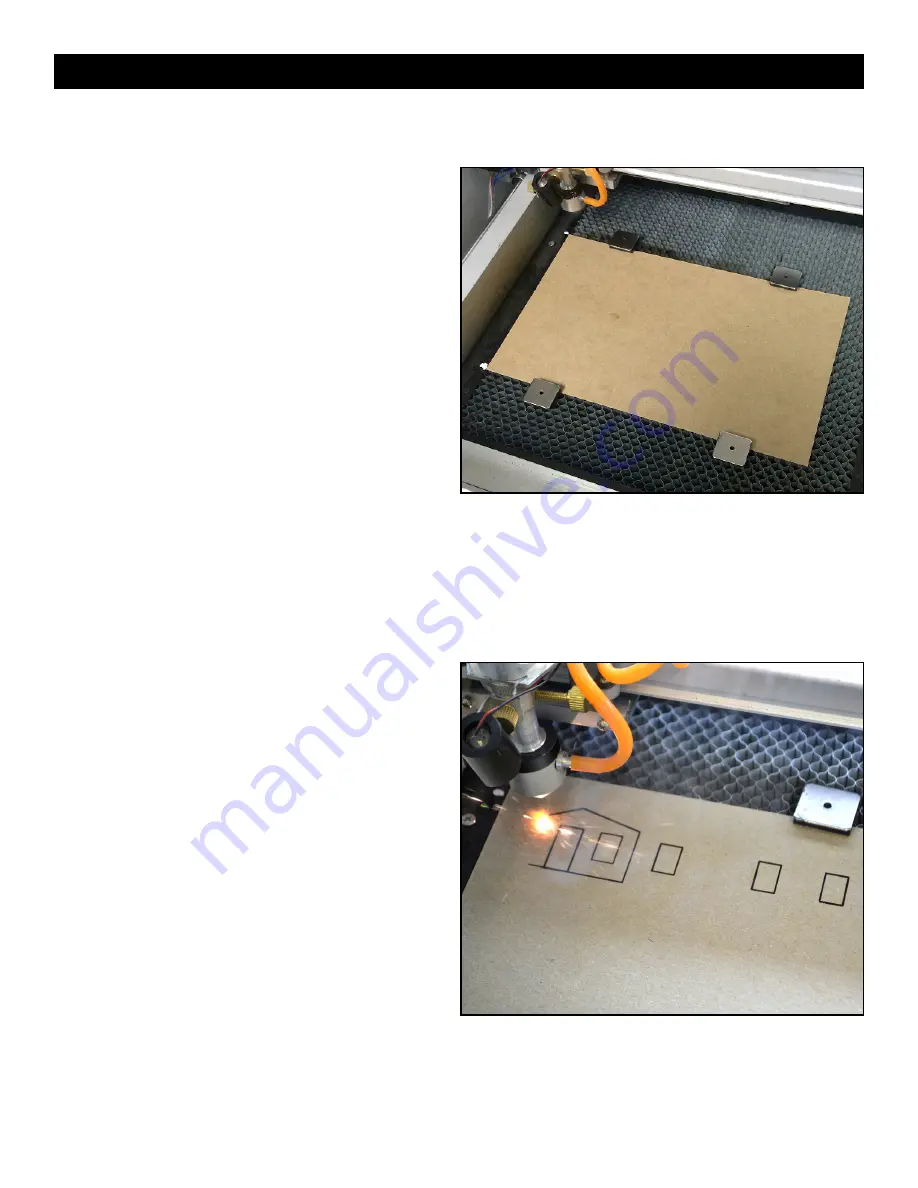
For the initial test, let’s load a piece of the provided 6” x 9” chipboard onto the honeycomb platform as shown below; that is,
all the way to the left edge, and centered in the lens’ range of motion from front-to-back.
Tip: We put a couple of dots of white paint on our
platform frame to help reload subsequent chipboards in
the same location. This will avoid having to reset the
starting crosshair position. You may prefer to use a
couple of the supplied magnets along the bottom edge
of the piece as a location guide.
Use the provided magnets to hold the chipboard tight to
the platform so that the laser stays focused.
Notice the tiny red dot projected onto the chipboard. This
is not the laser beam. This is an LED marker that shows
where the laser beam is aimed. The laser beam will
ultimately be seen as a bright white flash of light.
Close the lid. Turn the dial to the half-way position and
depress the “cutting” switch to its down position (this
allows the laser to fire). Now, quickly press and release the
“Test” button. Notice the burst of white light that the laser
fires at the chipboard. The little burned-through spot
should align with the projected red dot. If not, turn off the cutting switch and current dial, then reach into the chamber to
adjust the projector/LED housing so they are aligned when you again perform a test fire. In this way, you’ll be able to
pinpoint the starting point of the laser.
Going back to the computer screen…
In the upper left corner of the object image, two dotted cross-hairs will be visible.
Tip: Depending on the type of monitor and its resolution settings, small objects may appear as white outlines,
which you can see if you move your head to the side a bit.
You can click and drag the image to locate the cutting
head (the lens) in a good starting spot on the chipboard
(you should see the carriage move inside the machine) so
that the entire image can be cut out without running off the
board or across the magnets. If you think you’re in a good
location, click on “Starting” (under the Properties button . . .
if you forgot to install the USB “key,” you’ll be reminded
right here) and let the machine go through the cutting
routine (while the laser is still off). Watch the red pointer to
verify the correct travel. If the start position is okay, then at
the end of this “dry run,” depress the “cutting” button to its
down position, and turn up the dial to about 1/3 full current.
Then, click on “starting” again and the machine should cut
out the parts.
If all went well, and you have the sound turned on, the
computer will play a “TA-DA” when the cutting operation is
finished. Congratulations!
Remove the parts and the sheet. We suggest using a
vacuum cleaner to clean out stray cuttings from the cabinet.
Let’s Try Cutting Out Some Parts (continued)
9

















